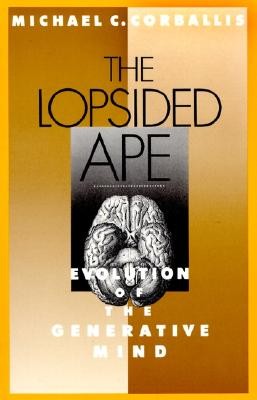| The Lopsided Ape: Evolution of the Generative Mind Contributor(s): Corballis, Michael C. (Author) |
|
 |
ISBN: 0195083520 ISBN-13: 9780195083521 Publisher: Oxford University Press, USA OUR PRICE: $55.44 Product Type: Paperback - Other Formats Published: June 1993 Annotation: What enables us to communicate with one another through the use of speech? Is the difference between Homo sapiens and other apes simply a matter of degree or are we unique and discontinuous from other species? Corballis argues that the answers to these questions lie in the fact that humans are the only primates that are predominantly right-handed, a sign of the specialization of the lift hemisphere of the brain for language. Illustrated. |
| Additional Information |
| BISAC Categories: - Psychology | Physiological Psychology - Medical | Neuroscience - Psychology | Cognitive Psychology & Cognition |
| Dewey: 152.335 |
| LCCN: 9000022905 |
| Physical Information: 0.72" H x 6.18" W x 9.24" (1.20 lbs) 384 pages |
| Descriptions, Reviews, Etc. |
| Publisher Description: What is it that allows human beings to think the way we do? What enables us to communicate with one another through the use of speech? Is the difference between Homo sapiens and other apes simply a matter of degree or are we unique and discontinuous from other species? Michael C. Corballis argues that this century-old debate lies in the fact that humans are the only primates that are predominantly right-handed, a sign of the specialization of the left hemisphere of the brain for language. He attributes humans' unique abilities to a biological mechanism in the left hemisphere of the brain called a generative learning device or GAD. The GAD, Corballis contends, enables us to generate a limitless number of forms and meanings from a few parsed elements, providing the basis for language and manufacture as well as mathematics, reasoning, art, music, and play. Surveying the current views of evolution using evidence from archeology, linguistics, neurology, and genetics, Corballis takes us on a fascinating tour of the origins and implications of the structure of the human brain accounting for the dominance of humanity over all species. |